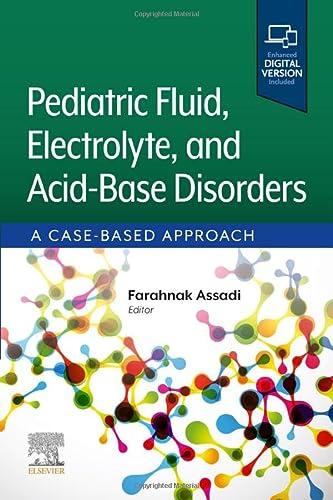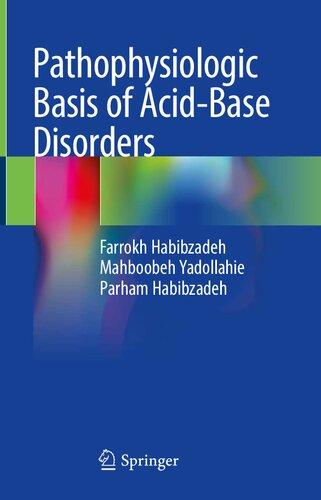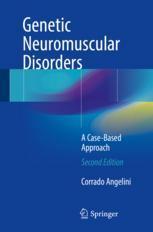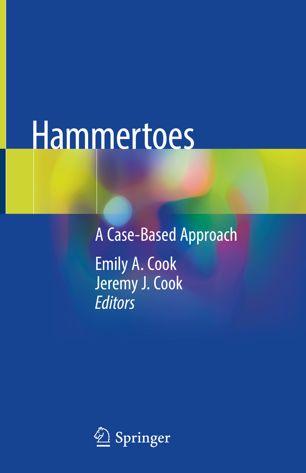Hyponatremia
Case Study 1
A 12-year-old male with a history of Hodgkin lymphoma and hypertension presented to the hospital with a 2-week duration of weakness and fatigue. He also reported a poor appetite and decreased oral intake but no weight loss. He denied shortness of breath, syncope, nausea, vomiting, or diarrhea. He also denied headache, confusion, polyuria, or polydipsia.
Home medications included amlodipine 10 mg once a day, lisinopril 10 mg once a day, and pembrolizumab 200 mg intravenously every 3 weeks. The latter was started 3 months prior to admission, and he had recently completed three cycles of therapy.
On admission, he was clinically euvolemic, blood pressure was 118/78 mmHg, and heart rate 62 beats/min. Initial work-up was notable for hyponatremia with serum sodium level of 120 mmol/L and metabolic acidosis with total bicarbonate of 16 mmol/L. Other laboratory results were: serum sodium 120 mmol/L, potassium 3.5 mmol/L, chloride 90 mmol/L, creatinine 0.6 mg/dL, BUN 8 mg/dL, phosphorous 2.6 mg/dL, aldosterone 5 ng/dL (reference: 7.4 to 29.8), thyroidstimulating hormone (TSH) 1.04 mIU/L (reference: 0.44 to 3.98), adrenocorticotropic hormone (ACTH) 5.1 pg/mL (reference: 7.2 to 63.3), and cortisol level measured in the morning 1.0 μg/dL (reference: 2.5 to 20.0).
A spot urinary protein-creatinine ratio was 0.12 mg/mg, and urine pH was 6.0. Urine analysis did not show any microscopic hematuria or pyuria. There was no glycosuria. Urinary sodium was 52 mmol/L, potassium 19 mmol/L, chloride 63 mmol/L, and osmolality 299 mOsm/kg.
Computed tomography scan of the abdomen was normal. Other laboratory studies including titers of serum antinuclear antibody, anti-neutrophil cytoplasmic antibody, and anti-SSA/SSB; tests for hepatitis B and C virus; and levels of C3 and C4 were all unrevealing.
What are the MOST likely causes of this patient’s hyponatremia and metabolic acidosis? (Select all that apply)
A. Syndrome inappropriate antidiuretic hormone (SIADH) and distal renal tubular acidosis (dRTA) secondary to immune checkpoint inhibitor therapy
B. SIADH and proximal RTA secondary to immune checkpoint inhibitor therapy
C. Immune-mediated central adrenal insufficiency causing SIADH and dRTA
D. SIADH and dRTA secondary to immune checkpoint inhibitor therapy
The correct answers are A and C
Comment: This patient had hypophysitis, which precipitated adrenal insufficiency. Low levels of ACTH and cortisol support this conclusion.
The laboratory work-up for this patient (inappropriate high urine osmolality in the presence of serum hypoosmolality, normal renal function, and absence of clinical features of dehydration or volume overload) is highly suggestive of SIADH.1–3
1 CHAPTER 1
Hyponatremia caused by SIADH is common in cancer patients receiving immune checkpoint inhibitors, and acute hyponatremia secondary to pembrolizumab has been reported.1–3 This patient also had normal anion gap metabolic acidosis with positive urine anion gap and low positive urine osmolar gap (< 150 mOsm/kg), which is highly suggestive of dRTA.4 Although dRTA is usually associated with hypokalemia, simultaneous adrenal insufficiency could have offset this finding.
Diagnosis of the etiology of hyponatremia is necessary in order to provide appropriate treatment. Laboratory assessments, including measurements of plasma osmolality, urine osmolality, and urine sodium, and clinical assessment of extracellular volume status are critical to the differential diagnosis of hyponatremia.
There are various causes of SIADH in a cancer patient: it may be a result of ectopic vasopressin production by tumor cells or a consequence of stimulation of vasopressin secretion or potentiation of vasopressin effects by anticancer drugs or palliative medications.5 There are many traditional chemotherapeutic treatments that can cause hyponatremia. Recently, immune checkpoint inhibitors have revolutionized the treatment of various solid tumors.6,7 There are adverse kidney effects associated with the development of hyponatremia and possibly SIADH.
dRTA is a tubulopathy characterized by dysfunction of distal urinary acidification, which subsequently can lead to a normal anion gap metabolic acidosis. Common causes include autoimmune diseases, drugs, genetic diseases, and tubulointerstitial diseases; however, in many cases a cause is not identified.7
In this patient, the dRTA is likely secondary to a renal immunotherapy-related adverse event. There has been extensive literature characterizing the various endocrinopathies associated with immune checkpoint inhibitors, including primary adrenal insufficiency, hypothyroidism, hyperthyroidism, and hypophysitis. Although the risk of immune checkpoint inhibitor–associated adrenal insufficiency is less than 1%, it is still associated with significant morbidity and mortality.1–3
The combination of hyponatremia, dRTA, and adrenal insufficiency in this patient is highly suggestive that his hyponatremia was secondary to adrenal insufficiency, which in turn we considered as an immunotherapy-related adverse event.
The patient was started on hydrocortisone 40 mg daily. This was accompanied by improvement in serum sodium and bicarbonate levels. Two days later, the patient’s hyponatremia and metabolic acidosis had resolved. He was eventually discharged on a tapering dose of steroids. Rapid resolution of both conditions upon initiation of steroids suggests that they are both immune-mediated adverse effects associated with pembrolizumab.
Case Study 2
A 12-year-old girl with no significant medical history presented with 4 hours of acute left leg swelling. Venous ultrasonography of the affected limb showed acute deep vein thrombosis involving the left femoral vein with extension to the external iliac vein and inferior vena cava. The patient was started on treatment with noxaparin and warfarin. Despite anticoagulation therapy, she developed small bilateral pulmonary emboli, and an inferior vena cava filter was placed. Hypercoagulable work-up was positive for lupus anticoagulant, high titers of anticardiolipin antibodies, and moderately elevated titers of anti-2 glycoprotein antibodies suggestive of antiphospholipid syndrome. On the third day of hospitalization, the patient developed acute hyponatremia with a sodium level that decreased from 137 to 115 mmol/L and normal anion gap metabolic acidosis. At that time patient’s serum potassium was 4.8 mmol/L, chloride 90 mmol/L, bicarbonate 19 mmol/L, BUN 20 mg/dL, creatinine 0.7 mg/dL. Serum osmolality was 242 mOsm/kg, urine osmolality 290 mOsm/kg, and urine sodium 77 mmol/L. Serum cortisol level measured in the morning was 0.3 μg/dL (reference: 5 to 20 μg/dL). Arterial blood gas showed pH 7.31, PCO2 37 mmHg, PO2 80 mmHg, and bicarbonate 20 mmol/L.
2 PEDIATRIC FLUID, ELECTROLYTE, AND ACID-BASE DISORDERS
Throughout this time, the patient was asymptomatic. On physical examination, pulse rate was 90 beats/min and blood pressure was 120/75 mmHg, with no orthostatic changes. Cardiovascular examination showed normal heart sounds, lungs were clear to auscultation, and there was no peripheral edema. Neurologic examination findings were normal.
What is the MOST likely cause of hyponatremia in this patient and how should be treated?
A. Syndrome inappropriate antidiuretic hormone (SIADH)
B. Liddle syndrome
C. Apparent mineralocorticoid excess
D. Primary adrenal insufficiency
The correct answer is D
Comment: The major causes of euvolemic hyponatremia are SIADH, hypothyroidism, glucocorticoid deficiency, and decreased urinary solute excretion, as in beer potomania or a very lowprotein diet.1 SIADH is the most frequent cause of euvolemic hyponatremia and can be seen in pulmonary diseases, malignancies, central nervous system diseases, and with certain drugs.2
In patients with SIADH, the non-physiologic secretion of antidiuretic hormone (ADH) leads to increased water reabsorption, resulting in dilutional hyponatremia when the intake of free water exceeds its excretory capacity.3–5 Hyponatremia in hypothyroidism is seen primarily in severe cases or myxedema.2 The mechanism by which hypothyroidism induces hyponatremia is incompletely understood. It is thought to be due to decreased cardiac output leading to the release of ADH through the carotid sinus baroreceptors.
Adrenal insufficiency should be ruled out before diagnosing SIADH. Glucocorticoid deficiency can cause hyponatremia in both primary and secondary adrenal insufficiency.6–8 Solute intake has a central role as a determinant of free water excretion. Inadequate dietary solute intake with reduced urinary solute excretion limits water excretion.5 This enables hyponatremia to develop with even modest water intake. This same mechanism is responsible for the hyponatremia seen in individuals who drink large quantities of beer (known as beer potomania) because beer has a low sodium content and these individuals often have limited overall dietary intake. This disturbance also can be observed in individuals with restricted protein or salt intake in combination with generous water intake.
The first step in the evaluation of euvolemic hyponatremia is to check for thyroid or adrenal abnormalities.
Our patient did not have hypertension and her thyroid-stimulating hormone level was normal. However, a random cortisol level was very low at 0.3 μg/dL, measured at 6 am (reference: 5 to 24 μg/dL). Corticotrophin level was elevated, and a cosyntropin stimulation test confirmed the diagnosis of primary adrenal insufficiency. Computed tomography of the abdomen showed bilateral adrenal enlargement with no contrast enhancement suggestive of hemorrhagic necrosis, possibly due to adrenal vein thrombosis from antiphospholipid syndrome. The patient’s sodium level corrected within 60 hours after giving 3% saline solutions in addition to intravenous steroid replacement with hydrocortisone. The patient was discharged on a regimen of warfarin and lowdose aspirin with oral steroid replacement therapy, including hydrocortisone and fludrocortisone. Repeated work-up 12 weeks later confirmed the diagnosis of antiphospholipid antibody syndrome. The levels of sodium and the rest of the electrolytes were normal.
Hyponatremia is the most common electrolyte abnormality encountered in clinical practice, occurring in up to 30% of hospitalized patients.6 Adrenal insufficiency, a rare but important endocrine disorder that results in hyponatremia, is caused by either primary adrenal failure (most commonly due to autoimmune adrenalitis) or impairment of the hypothalamic-pituitary axis (primarily pituitary disease).7–9 Hyponatremia in adrenal insufficiency is multifactorial. Mineralocorticoid deficiency is present only in primary adrenal insufficiency and results in hypovolemia, low blood pressure, postural
1—HYPONATREmIA 3
hypotension, and occasionally prerenal acute kidney injury. Other metabolic features of primary adrenal insufficiency include hyponatremia (90% of patients with primary adrenal insufficiency), hyperkalemia (65%), and salt craving (15%). In addition, plasma ADH is stimulated by decreased circulating blood volume, which then triggers water retention. In addition to hyponatremia and hyperkalemia, mild hyperchloremic acidosis can occur with mineralocorticoid deficiency. Hyperkalemia suppresses the production of renal ammonia, leading to reduced ammonium ion excretion and thus reduced net acid excretion.10,11 Although the main cause of decreased ammonia production is hyperkalemia itself, aldosterone deficiency or resistance also may contribute to the decrease. Hyponatremia also can develop in secondary adrenal insufficiency due to failure to fully suppress ADH secretion in response to hypoosmolarity. ADH and corticotrophin-releasing hormone in the parvocellular neurons of the paraventricular nucleus are negatively regulated by glucocorticoids. When the negative feedback action of glucocorticoids is removed, the result is up regulation of corticotrophin-releasing hormone and ADH gene expression in the paraventricular nucleus neurons. Animal experimental studies showed that glucocorticoids also inhibit ADH gene transcription and decrease messenger RNA stability.12 In both glucocorticoid and mineralocorticoid deficiency, the changes in hemodynamics also have a role in causing hyponatremia, separately from ADH, because they limit the delivery of tubular fluid to the diluting segment of the nephron. The pathogenesis of adrenal insufficiency in antiphospholipid syndrome is related to vascular complications, including adrenal vein thrombosis and edema of the adrenal gland, resulting in obstructed arterial supply and hemorrhagic infarction.13,14 The adrenal glands’ unique vascular anatomy, featuring a rich arterial supply but only a single vein with limited drainage, predisposes these patients to thrombosis.13
The primary therapy for all types of adrenal insufficiency is glucocorticoids. Although several types of glucocorticoids are available, hydrocortisone is preferred because its short half-life is the most similar to the normal circadian rhythm of cortisol. Patients with primary adrenal insufficiency also require mineralocorticoid therapy (fludrocortisone). The mineralocorticoid dose can be modified based on serum potassium level and plasma renin activity and the symptoms experienced by the patient, such as orthostatic dizziness or salt craving. Suppressed plasma renin activity can be a helpful indicator of an overdose of fludrocortisone, an overdose that may cause retention of fluid, edema, and hypertension.
Case Study 3
A 15-year-old woman is started on hydrochlorothiazide and a low-sodium diet for the treatment of hypertension. After 1 week, she complains of weakness, muscle cramps, and postural dizziness. On physical examination, the patient is found to be alert and oriented. The blood pressure is 130/86 mmHg (the pretreatment level was 150/100 mmHg). The skin turgor is decreased, and the jugular venous pressure is less than 5 cmH2O. The laboratory data are serum sodium 119 mmol/L, potassium 2.1 mmol/L, chloride 71 mmol/L, bicarbonate 34 mmol/L, plasma osmolality 252 mOsm/kg, urine osmolality 540 mOsm/kg, urine sodium 4 mmol/L.
What are the MOST likely causes for this patient’s hyponatremia?
(Select all that apply)
A. Hydrochlorothiazide
B. Volume depletion
C. Increased ADH secretion
D. Water retention
E. Potassium depletion
The correct answers are A, B, C, and D
Comment: All of these factors contributed to hyponatremia. Hydrochlorothiazide-induced volume depletion (physical findings plus low urine sodium concentration), which enhanced
4 PEDIATRIC FLUID, ELECTROLYTE, AND ACID-BASE DISORDERS
antidiuretic hormone (ADH) release (high urine osmolality of 540 mOsm/kg), resulting in water retention and hyponatremia. The loss of potassium also played a contributory role via a transcellular K+-Na+ exchange.1,2
Therapy should include the administration of sodium and potassium in a hypertonic solution, such as 40 mmol of KCl added to each liter of isotonic saline. There is little justification for water restriction, since the patient is volume depleted. In view of the metabolic alkalosis, KCl, not potassium citrate is indicated (since citrate is metabolized into bicarbonate). Half-isotonic saline should also be avoided because it is a hypotonic solution that will further lower the plasma sodium concentration.
Case Study 4
A 17-year-old male with hypertension treated with unknown medications is admitted to the hospital in a comatose state, responding only to deep pain. On physical examination, the blood pressure is found to be 180/120 mmHg. The skin turgor is reduced, and the neck veins are flat. After appropriate studies, the diagnosis of an intracerebral hemorrhage is made. To minimize the degree of brain swelling, the patient is given a total of 25 g of mannitol. Only 100 mL of 5% dextrose in water is given. The laboratory data at this time include serum sodium 120 mmol/L, potassium 3.3 mmol/L, chloride 78 mmol/L, bicarbonate 29 mmol/L, plasma osmolality 253 mOsm/kg, urine osmolality 240 mOsm/kg, and urine sodium 45 mmol/L.
What is the MOST likely diagnosis of this patient’s hyponatremia?
A. Pseudohyponatremia due to mannitol
B. Volume depletion
C. SIADH
D. Neurogenic salt wasting syndrome
The correct answer is B
Comment: Hyponatremia in this patient is due to volume depletion, probably induced by diuretic therapy for hypertension.1,2 The physical findings suggestive of hypovolemia, hypokalemia, and high plasma bicarbonate concentration are all compatible with this diagnosis. Pseudohyponatremia due to mannitol is not present since the measured plasma osmolality is low and is similar to the calculated value [calculated plasma osmolality = 2 × 120 + (125 ÷ 18) + (15 ÷ 2.8) = 252 mOsml/kg]. SIADH due to stroke also cannot account for hyponatremia. Hyponatremia must have preceded the stroke, since the patient subsequently received only 100 mL of water, a quantity that is insufficient to lower the plasma sodium concentration.
Case Study 5
A 19-year-old man weighing 70 kg is admitted to the hospital with a 2-week history of progressive lethargy and obtundation. The physical examination is within normal limits except for the obtundation. The following laboratory studies are obtained: Serum sodium 105 mmol/L, potassium 4 mmol/L, chloride 72 mmol/L, bicarbonate 21 mmol/L, plasma osmolality 210 mOsm/kg, urine osmolality 604 mOsml/kg, and urine sodium 78 moml/L.
What is the most likely diagnosis and how and at what initial rate would you raise the plasma sodium concentration?
A. Pseudohyperaldosteronism
B. Diuretic abuse
C. Adrenal insufficiency
D. Syndrome of inappropriate antidiuretic secretion (SIADH)
1—HYPONATREmIA 5
The correct answer is D
Comment: The most likely diagnosis is SIADH.1–3 Hypertonic saline should be given initially in view of the marked hyponatremia and neurologic symptoms.
The approximate sodium deficit that must be corrected to raise the plasma sodium concentration to a safe value of 120 mmol/L can be estimated from Na+ deficit = 0.6 × 70 (120 to 105) or 630 mmol.
This requires approximately 1200 mL of 3% saline, which should be given at the rate of 40 mL/h over 30 hours to raise the plasma sodium concentration by 0.5 mmol/L/h. Furosemide will enhance the efficacy of this regimen by lowering urine osmolality, thereby increasing freewater excretion.
Case Study 6
A previously healthy 18-year-old girl experienced three grand mal seizures 2 days after an appendectomy. She received 10 mg of diazepam and 150 mg of phenytoin intravenously and underwent laryngeal intubation with mechanical ventilation. She had been treated with 6 L of 5% dextrose containing 37-mmol sodium/L during the first 3 days after surgery. She is stuporous and responds to pain but not to commands. She is euvolemic, her weight is 46 kg, serum sodium is 110 mmol/L, potassium is 4.1 mmol/L, uric acid is 3.1 mg/dL, and osmolality is 228 mOsm/kg H2O. Urine osmolality is 510 mOsm/kg.
What is the appropriate initial fluid for treating this patient’s hyponatremia?
A. Infusion of 3% saline at 70 mL/h
B. Infusion of 0.9% saline at 150 mL/h
C. Infusion of 0.45% saline at 300 mL/h
D. Infusion of 0.2% saline at 600 mL/h
The correct answer is A
Comment: Hypotonic hyponatremia in this patient is a result of water retention (use of hypotonic solution) caused by the impaired water excretion due to her SIADH postoperatively on the presence of hypotonic hyponatremia and concentrated urine in a euvolemic patient, the absence of a history of diuretic use, and the absence of clinical evidence of hypothyroidism or hypoadrenalism.1
The goal of treatment here is a rapid increase in serum sodium level to the point where mental status is improved and the risk of further seizures is decreased adequately. The infusion of 3% saline, diuretic use, and fluid restriction are management tools, which allow for these goals to be achieved.
The effect of 1 L of 3% hypertonic saline on serum sodium change is estimated by the following formula2,3: According to the formula, the infusion of 1 L of 3% saline will increase the serum sodium concentration by 14.4 mmol/L ([513–110] + [27 + 1] = 14.4).
Nachange mmol/L[infusateNammol/L]–[serum Nammol/L](TBWliters1)
Given the seriousness of the patient’s symptoms the initial goal is to raise the serum sodium concentration by 4 mmol/L over the next 2 hours; thus 139 mL of 3% hypertonic saline (2 ÷ 14.4), or 70 mL/h, was required.
At the end of 2 hours, patient’s mental status is substantially improved and her serum sodium concentration is 114 mmol/L. The goal of treatment now is to raise serum sodium slowly
6 PEDIATRIC FLUID, ELECTROLYTE, AND ACID-BASE DISORDERS
+ ++ = ÷+
by additional 3 mmol/L over the next 3 hours, thus the infusion rate of 3% saline was reduced to 35 mL/h. Five hours after fluid therapy, the serum sodium concentration is 117 mmol/L. The patient is fully alert and oriented. The new goal of treatment is to slowly increase serum sodium concentration by 8 mmol/L over the next 24 hours. The 3% hypertonic is stopped and fluid therapy with 0.9% saline began; thus, 1.32 L of 0.9% saline (154 - 117) ÷ (27 + 1) or 55 mL/h was required.
Case Study 7
A 50-kg male has SIADH due to a tumor. He appears clinically euvolemic. The serum sodium is in steady state and 127 mmol/L, and K+ is 4.0 mmol/L. There are no symptoms attributable to hyponatremia. Patient is clinically euvolemic and consuming a usual diet.
How much water restriction would correct the hyponatremia?
A. 2200 mL
B. 1900 mL
C. 1600 mL
D. 1300 mL
The correct answer is B
Comment: Hypotonic hyponatremia in this euvolemic patient is due to water retention in the presence of normal sodium stores due to SIADH. Physiologically, in patients with SIADH, the TBNa+ is normal, but the TBW is increased proportionately to the fall in plasma sodium (PNa+) concentration, due to overproduction of ADH. The treatment plan is to remove excess water. Because TBNa+ is the product of TBW and PNa+ concentration, the excess water gain in SIADH patients can be estimated using the following equation1–3:
TBNa+ at health = TBNa+ in SIADH or (50 kg × 0.6) × 135 mmol/L = (TBW × 127mmol/L) or patient’s TBW = [30 L] × 135mmol/L ÷ 127 mEq/L or 31.9 L. Patient’s estimated water retention is 1.9 L (31.9 30).
This patient is alert and asymptomatic. The treatment plan includes water restriction and/or the intravenous administration of furosemide along with isotonic saline. Close monitoring of patient’s urine output, weight, and serum sodium concentration is required.
Case Study 8
A 14-year-old female is brought to the hospital because of watery diarrhea for the past 3 days. Past medical history is significant for essential hypertension. She has been on a low-sodium diet and hydrochlorothiazide daily for the control of hypertension.
On examination she appears mildly lethargic but consolable. She weighs 45 kg, blood pressure is 96/56 mmHg, and the pulse is 100 beats/min. The jugular vein is flat, and skin turgor is decreased. The serum sodium concentration is 121 mmol/L, potassium 3.2 mmol/L, bicarbonate 26 mmol/L, BUN 46 mg/dL, creatinine 1.4 mg/dL, osmolality 232 mOsm/kg H2O, and urine osmolality is 650 mOsm/kg H2O.
What is the appropriate initial fluid for treating this patient’s hyponatremia?
A. 0.9% saline at 222 mL/h
B. 0.45% saline at 444 mL/h
C. 0.9% saline at 444 mL/h
D. 0.45% saline at 222 mL/h
1—HYPONATREmIA 7
The correct answer is C
Comment: In this patient, hypotonic hyponatremia is due to sodium and water losses caused by thiazide diuretic, low-salt diet, and new onset of diarrhea. The sodium loss is greater than the water loss and that is why the patient has hyponatremia. The goal of treatment is to restore the extracellular volume depletion. Hydrochlorothiazide and water are withheld, and infusion of a 0.9% saline containing 30 mmol of KCl/L is initiated.
The effect of 1 L of 0.9% saline on serum sodium change can be estimated using the following formula1,2:
Nachange[infusateNammol/LKmmol/L]–(serumNammol/L) ( TBWliters1 )
According to formula, the infusion of 1 L of 0.9% saline containing 30 mEq KCl will increase the serum Na+ concentration by 6.57 mmol/L [154 + 30] [121] ÷ [27 + 1] = 2.25. The initial treatment goal is to raise the serum sodium concentration by 2.0 mmol/L over the next 2 hours. Therefore, 888 mL 0.9% saline (2 ÷ 2.25) or 444 mL/h is required. Isotonic saline is effective in correcting hyponatremia caused by volume depletion because elimination of a volume stimulus for vasopressin secretion results in a water diuresis, thus helping improving hyponatremia.
Two hours later, the blood pressure is 128/72 mmHg, the serum sodium is 123 mmol/L, and potassium is 3.9 mmol/L. Patient’s mental status is substantially improved. At this point the goal of treatment is to raise serum sodium slowly by 5 mmol/L over the next 12 hours; thus 2.17 L 0.9% saline or 230 mL/h will promote the correction of hyponatremia.
Frequent monitoring of the serum sodium concentration, every 6 to 8 hours, is necessary in order to make further adjustments in the amount of fluid administered.
Case Study 9
A 7-year-old boy with chronic obstructive lung disease due to cystic fibrosis is admitted to the hospital with a 2-week history of progressive lethargy. The physical examination is within normal limits except for the lethargy. The following laboratory studies are obtained: plasma sodium 111 mmol/L, potassium 4 mEq/L, chloride 72 mEq/L, bicarbonate 21 mEq/L, urate 2.9 mg/dL, plasma osmolality 222 mOsm/L, urine Na+ 78 mEq/L, and urine osmolality 604 mOsm/L.
What solution should be used and at what approximate hourly rate to get the patient out of danger?
A. 0.3% saline at 70 mL/h
B. 0.9% saline at 140 mL/h
C. 0.45% saline at 280 mL/h
D. 0.2% saline at 35 mL/h
The correct answer is D
Comment: In this patient, hypotonic hyponatremia is a result of water retention in the presence of normal Na+ stores due to impaired water excretion that is associated with the syndrome inappropriate antidiuretic (SIADH). The aim of treatment should be to raise the serum sodium concentration to about 120 mmol/L in the first 12 hours.
The effect of 1 L of 3% hypertonic saline on serum Na+ change can be estimated using the following formula1,2:
Nachange(infusateNammol/L)–[serumNammol/L](TBWliters1)
8 PEDIATRIC FLUID, ELECTROLYTE, AND ACID-BASE DISORDERS
+ ++ + = + ÷+ +++ = ÷+
According to this formula, the infusion of 1 L of 3% saline will increase the serum sodium concentration by 28.7 mEq/L (513 105) ÷ (13.2 + 1) = 28.7 mmol/L.
Given the seriousness of the patient’s symptoms the initial goal is to raise the serum sodium concentration by 4 mEq/L over the next 2 hours; thus 70 mL of 3% hypertonic saline (2 ÷ 28.7), or 35 mL/h, is required.3 Furosemide will enhance this effect by making the urine relatively iso-osmotic to plasma, thereby reducing free water generation by the kidney. Frequent monitoring of the serum sodium concentration, initially every 2 to 3 hours, is necessary in order to make further adjustments in the amount of fluid administered. After patient’s mental status is improved and/or serum sodium concentration increased to120 mmol/L, the goal of treatment is to raise serum sodium slowly by 5 mEq/L over the next 12 hours; thus 2.39 L 0.9% saline [154 120] ÷ [13.2 + 1] or 199 mL/h will promote the correction of hyponatremia. Furosemide will enhance this effect by making the urine relatively hypotonic to plasma, thereby reducing free water generation by the kidney.
Case Study 10
A previously healthy 19-year-old woman was admitted to a university teaching hospital for kidney transplant donation. Past medical history was unremarkable. The physical examination was normal. Her blood pressure was 120/76 mmHg, weight 58 kg, and the preoperative tests for renal function, urinalysis, and chest radiograph were normal. The patient’s intraoperative course was uneventful. The estimated blood loss during the 2-hour surgery was 150 mL. Immediately after the surgery, she complained of pain and severe nausea. She was treated with intravenous morphine for pain and Phenergan for nausea. She received a total of 5.8 L of 0.2% saline in 5% dextrose in water during the first day of surgery. On postoperative day 2, she was noted to be confused and combative and had a brief apnea spell. Her serum sodium was 114 mmol/L. The patient was transferred to the pediatric intensive care unit. Physical examination revealed blood pressure of 142/87 mmHg, heart rate 60 beats/min, nuchal rigidity, unisocoria but no other focal neurologic findings. Two hours later, serum electrolytes (mmol/L) were sodium 110, potassium 3.8, chloride 84, bicarbonate 25, blood urea nitrogen (BUN) 2.9, glucose 5.1 mmol/L, creatinine 0.5 mg/dL, uric acid 5.1 mg/dL, serum osmolality 250 mmol/kg, and urine osmolality 625 mmol/kg. Arterial blood gas analysis showed pH 7.34, PO2 7.58 mmHg, and PCO2 6.3 mmHg. Hemoglobin was 8.2 g/dL. The radiograph of chest showed evidence of pulmonary edema. The pulmonary wedge pressure was 8 mmHg. A computed tomography (CT) scan of the brain was ordered. En route to the CT the patient had a seizure and respiratory arrest. She was resuscitated and her pupils were dilated. Six hours later, the urine output increased to 300 mL/h, urine osmolality fell to 60 mmol/L; serum sodium rose to 162 mmol/L and she developed central diabetes insipidus. She died 12 hours later, and the autopsy showed massive cerebral edema, uncal herniation, intact basilar artery, and patent pulmonary arteries.
Why did this patient develop pulmonary edema and hypoxia?
A. Congestive heart failure
B. Adrenal insufficiency
C. Hyponatremic encephalopathy
D. Reset hyponatremia
E. Cerebral salt-wasting syndrome
The correct answer is C
Comment: The lethal combination of being in surgery (excess vasopressin release) and use of hypotonic solution postoperatively resulted in severe hyponatremia, cerebral edema, and neurogenic pulmonary edema. Pulmonary edema may be the first manifestation of hyponatremic encephalopathy.1–5
1—HYPONATREmIA 9
Case Study 11
A 10-month-old White male was admitted to the hospital for the repair of cleft lip. His weight was 7.5 kg, temperature 37°C, pulse 140 beats/min, and respiratory rate 45 breaths/min. Physical examination was otherwise unremarkable. Laboratory data on admission included a hematocrit of 0.41%, serum sodium 121 mmol/L, potassium 4.2 mmol/L, chloride 91 mmol/L, bicarbonate 24 mmol/L, glucose 98 mg/dL, BUN 18 mg/dL, and creatinine 0.8 mg/dL. Urinalysis revealed the following: pH 5.5, specific gravity 1.019, trace protein and no cells. Urinary sodium, chloride, and potassium were 43, 34, and 18 mmol/L, respectively. Liver function studies were normal. Serum cortisol, thyroxin, and aldosterone levels were also normal. Hyponatremia was unresponsive to high sodium intake (10 mmol/kg/24 h) or administration of fludrocortisone orally at 0.05 mg/day. Serum electrolyte values (mmol/L), while receiving salt supplements and fludrocortisones, were as follows: sodium 127, potassium 4.3, chloride 98, and bicarbonate 25. Urine sodium concentrations ranged between 128 and 178 mmol/L. Urine osmolality was 689 mOsm/kg during the initial presentation and fell to an average of 56 mmol/kg after the ECF volume contraction was corrected. Computed tomography (CT) and nuclear magnetic resonance (MRI) of the brain showed no abnormality in the hypothalamic area.
What is the most likely cause for this patient’s hyponatremia?
A. Reset osmostat
B. Syndrome inappropriate ADH secretion (SIADH)
C. Hypoaldosteronism
D. Primary polydipsia
E. Hypothyroidism
The correct answer is A
Comment: In a patient with normovolemic hyponatremia, the diagnosis of reset osmostat should be considered after exclusion of the diagnosis of SIADH and other endocrine disorders.1–5 In this type of hyponatremia, renal diluting capacity is normal, but the normal regulation of serum tonicity takes place at a lower serum osmolality threshold. The diagnosis of reset osmostat can be confirmed by challenging these patients with a water load and measuring the ability to maximally dilute the urine osmolality.1,2 The mechanism responsible for resetting of the osmostat is not understood. Differentiation between the patients with hyponatremia resulting from reset osmostat and those with alterations in total body sodium and water content is important, because management differs according to diagnosis. The hyponatremia in patients with reset osmostat is asymptomatic and requires no specific therapy.
Case Study 12
An 18-year-old man developed polyuria following resection of recurrent craniopharyngioma. His brain tumor was first detected when he was 10 years old. Surgical resection at that time was followed by the development of panhypopituitarism and diabetes insipidus requiring chronic hormonal replacement therapy. At 18 years of age, a recurrent tumor growth led to another surgical resection 6 days ago. Five days after the surgery, he developed polyuria followed by headache and increasing lethargy and experienced a generalized tonic-clonic seizure. His medications included Synthroid (levothyroxine sodium), Carafate, hydrocortisone, and desmopressin acetate. Examination revealed an obese, adolescent male who was found to have tachycardia (pulse 102 beats/min), ECF volume depletion, and hypotension (blood pressure 94/56 mmHg). His chest was clear, and the cardiac exam was normal. He appeared to have adequate peripheral perfusion. Urinalysis showed specific gravity 1.012, pH 6, negative dipstick, and unremarkable microscopy.
10 PEDIATRIC FLUID, ELECTROLYTE, AND ACID-BASE DISORDERS
Serum electrolytes (mmol/L) were sodium 123, potassium 3.4, chloride 92, and bicarbonate 25. Serum glucose was 92 mg/dL, BUN 16 mg/dL, creatinine 0.7 mg/dL, uric acid 6.1 mg/dL, and osmolality 259 mOsm/kg. Urine sodium was 224 mmol/L, potassium 22 mmol/L, chloride 261 mmol/L, creatinine 1200 mg/L, and osmolality 509 mOsm/kg. Fractional sodium excretion was 2.5%. His urine output over the last 3 days averaged 290 mL/h, exceeding his fluid intake.
Which ONE of the following is the MOST likely cause of hyponatremia in this patient?
A. Syndrome inappropriate antidiuretic hormone (SIADH)
B. Diabetes insipidus
C. Hypoaldosteronism
D. Cerebral salt-wasting syndrome
E. Interstitial nephritis
The correct answer is D
Comment: This patient abruptly developed polyuria, hypovolemia, and symptomatic hyponatremia 5 days after intracranial surgery. Examining the urine osmolality can narrow the differential diagnosis of his polyuria. Urine osmolality less than 100 mmol/kg indicates deficiency or resistance to vasopressin, while hyperosmolar urine indicates a solute diuresis.1–3 This patient’s urine osmolality exceeded 500 mmol/L, demonstrating that desmopressin was effective enough to produce a high rate of free water absorption (high urine flow rate on postoperative days) that undoubtedly contributed to his hyponatremia. Diabetes insipidus does not appear to be a major factor in this patient’s decompensations. This case may be also due to desalination hyponatremia related to ECF overexpansion with normal saline in the setting of ADH action (high urine osmolality, Na+ , and K+) or SIADH. The etiology of solute diuresis can be determined by measuring urine electrolyte concentrations. The sum of this patient’s urine sodium and chloride levels approximated his urine osmolality. Therefore, he was experiencing a saline diuresis that, in the presence of hypovolemia and hyponatremia, reflected inappropriate renal salt wasting. The development of excessive natriuresis and hyponatremia shortly following brain surgery is consistent with the syndrome of cerebral salt wasting. This disorder can be differentiated from the syndrome of inappropriate ADH secretion by the presence of markedly negative water and sodium balance, higher rates of urine flow and sodium excretion, as well as a normal serum uric acid level. Treatment consists of vigorous saline replacement and, possibly, pharmacologic doses of mineralocorticoids.
Case Study 13
A 5-week-old male was admitted to the hospital because of diarrhea and dehydration. His mother was a 22-year-old female who had an uncomplicated pregnancy and delivery. His birth weight was 2.4 kg. He was discharged from the premature nursery at 2 weeks of age. When seen in the emergency room, he was severely dehydrated and tremulous. His weight was 2.1 kg, temperature 27°C, pulse 140 beats/min, and respiratory rate 45 breaths/min. Physical examination was otherwise unremarkable. Laboratory data on admission included: a hematocrit of 50%, blood urea nitrogen (BUN) 28 mg/dL, creatinine 1.7 mg/dL, Na+ 121 mmol/L, K+ 3.8 mmol/L, C1- 98 mmol/L, and bicarbonate 14 mmol/L. Urinalysis revealed the following: pH 5.5, specific gravity 1.019, trace protein, and no cells. Urinary electrolytes (mmol/L) were Na+ 8, Cl- 43, and K+ 11. Serum glucose concentration was 88 mg/dL, calcium 9.2 mg/dL, and phosphorus 5.1 mg/dL. Liver function studies, including serum glutamic oxaloacetic transaminase (29 IU/mL), serum glutamic pyruvic transaminase (13 kU/mL), alkaline phosphatase (197 IU/mL), and bilirubin (0.4 mg/dL) were normal. Serum cortisol (7.3 μg/dL), thyroxine (9.1 μg/dL), and aldosterone (71 pg/mL) levels were also normal.
1—HYPONATREmIA 11
What is the MOST likely cause of this patient’s hyponatremia and how would you treat this patient?
A. Syndrome inappropriate secretion of antidiuretic hormone (SIADH)
B. Adrenal insufficiency
C. Reset hyponatremia
D. Bartter syndrome
The correct answer is C
Comment: In a patient with euvolemic hyponatremia, the diagnosis of reset osmostat should be considered after exclusion of the diagnosis of SIADH and other endocrine disorders.1–3 The diagnosis of SIADH is excluded by the production of maximally dilute urine with volume repletion. The hyponatremia in patients with reset osmostat is asymptomatic and requires no specific therapy.1–3
Case Study 14
A 19-year-old adolescent male developed polyuria following resection of craniopharyngioma. Two days after the surgery, he developed hyponatremia followed by headache and increasing lethargy and experienced a generalized tonic–colonic seizure. On examination his weight was 83 kg, pulse 102 beats/min, blood pressure 108/67 mmHg. Chest was clear, and the cardiac exam was normal. The daily urine output ranged between 4.6 and 6.9 L. Urinalysis showed specific gravity 1.012, pH 6, negative dipstick, and unremarkable microscopy. Serum electrolytes (mmol/L) were sodium 123, potassium 3.4, chloride 92, bicarbonate 25, glucose 89 mg/dL, BUN 16 mg/ dL, creatinine 0.9 mg/dL, uric acid 2.2 mg/dL, and osmolality 254 mOsm/kg. Urine sodium was 265 mmol/L, potassium 22 mmol/L, chloride 231 mmol/L, osmolality 509 mOsm/kg, and fractional urate excretion (FEurate) was 21%. The FEurate remained unchanged after the correction of hyponatremia.
What is the MOST likely cause of this patient’s hyponatremia?
A. Cerebral salt wasting
B. Reset osmostat
C. Syndrome inappropriate ADH secretion (SIADH)
D. Adrenal insufficiency
The correct answer is A
Comment: This patient abruptly developed polyuria, hypovolemia, and symptomatic hyponatremia shortly after intracranial surgery. The sudden increase in urine output along with the increased loss of sodium and chloride that was not matched by infusion of isotonic saline induced hypovolemia that could not be assessable by usual clinical criteria. The etiology of solute diuresis can be determined by measuring urine electrolyte concentrations. The sum of this patient’s urine sodium and chloride levels closely approximated his urine osmolality. Therefore, he was experiencing a saline diuresis that, in the presence of hypovolemia and hyponatremia, reflected inappropriate cerebral-renal salt wasting (C/RSW).1 The development of excessive natriuretic and hyponatremia shortly following brain surgery is consistent with the syndrome of C/RSW.1 This disorder can be differentiated from SIADH by the presence of markedly negative sodium balance, higher rates of urine flow, and sodium excretion.2–4 FEurate is also elevated in patients with C/RSW (> 10%) and remains persistently elevated even after correction of hyponatremia. Treatment consists of vigorous saline replacement.
12 PEDIATRIC FLUID, ELECTROLYTE, AND ACID-BASE DISORDERS
Case Study 15
A 7-month-old female infant of Armenian origin presented with difficult feeding, vomiting, and inadequate weight gain starting from the first month of life. She was born at 38 weeks of gestation with a weight of 3.3 kg. She was fed breast milk and formula. Vomiting started at 2 months of age; she refused breast milk at 5 months. At 7 months of age, she was hospitalized because of a urinary tract infection, with mild hyponatremia (129 mmol/L) and hyperkalemia (5.7 mmol/L). Her family history was unremarkable except that her father had familial Mediterranean fever (FMF) and her mother had Hashimoto thyroiditis. On examination, she appeared mildly dehydrated. The body temperature was 36.0°C, the pulse 120 beats/min, the blood pressure 95/50 mmHg (on the left lower leg), and the respiratory rate 24 breaths/min. Her body weight was 4.7 kg ( 4.05 SD), and height was 61 cm ( 2.64 SD). Apart from a sacral dimple, the physical examination was normal.
Laboratory workup yielded the following: leukocyte count 14.700/mm3 with 24.9% polymorphonuclear leukocytes, hemoglobin 10.6 g/dL, platelet count 513 × 103/mL, blood urea nitrogen 6 mg/dL, serum creatinine 0.25 mg/dL, albumin 4.9 g/dL, sodium 129 mmol/L, potassium 5.1 mmol/L, blood gas analysis, and other biochemical findings were normal. Plasma renin, aldosterone, and cortisol levels were normal. Urinalysis revealed a pH of 6, specific gravity of 1.012, with no leucocytes or erythrocytes, but with an elevated urine sodium level (70 mmol/L). Plasma steroid profile and levels of 17-OH progesterone and cortisol were within the normal range (0.075 and 45.1 ng/mL, respectively), with an increased serum corticosterone level (20.1 ng/mL, N 0.8 to 15 ng/mL) and decreased serum aldosterone level (0.035 ng/mL, normal range: 0.044 to 0.74 ng/mL) by liquid chromatography mass spectrometry (LC-MS). Abdominal ultrasonography showed normal findings. Esophagogastroduodenoscopy was also normal, as were the biopsy results. Her urine output was 2.3 to 3.8 mL/kg/h.
Due to persistent vomiting, she received ranitidine and sodium alginate for the treatment of possible gastroesophageal reflux disease. Metabolic screening tests including lactate and pyruvate levels, and tandem mass spectroscopy were normal. Her weight gain was 1 kg over a month. Despite salt supplementation, mild hyponatremia (129 to 132 mmol/L) and hyperkalemia (5.6 to 6.6 mmol/L) persisted.
What is the MOST likely diagnosis?
A. Bartter syndrome
B. Primary aldosteronism
C. Aldosterone synthase deficiency (ASD)
D. Congenital adrenal hyperplasia
The correct answer is C
Comment: Our patient presented with severe salt wasting with signs and symptoms of dehydration, difficult feeding, and failure to thrive in early infancy. Clinical presentation along with a typical biochemical profile including hyponatremia, hyperkalemia, normal cortisol, and sex steroids and inappropriately normal aldosterone levels suggested aldosterone synthase deficiency (ASD), subsequently confirmed by the molecular analysis of the CYP11B2 gene.1–4 The normal blood pressure and normal plasma renin activity of our patient may possibly be related to the presence of partial aldosterone synthase activity.
Gastrointestinal causes including gastrointestinal reflux disease, milk protein intolerance, and cystic fibrosis were ruled out based on the normal findings on esophagogastroduodenoscopy and anti-reflux medications did not improve vomiting. The result of the sweat test was also unremarkable.
1—HYPONATREmIA 13
The ongoing hyponatremia and mild hyperkalemia led us to consider endocrinologic problems, particularly adrenal insufficiency.1,2 Adrenal insufficiency may be primary or secondary. Destruction or dysfunction of the adrenal cortex is the cause of primary adrenal insufficiency, while secondary adrenal insufficiency is associated with pituitary or hypothalamic diseases due to adrenocorticotropic hormone (ACTH) or corticotropin-releasing hormone (CRH) deficiencies, respectively. The presence of hyperkalemia in the present case suggested mineralocorticoid deficiency, which is characteristic of primary rather than secondary adrenal insufficiency.1 The most common cause of primary adrenal insufficiency in childhood is congenital adrenal hyperplasia due to 21-α hydroxylase deficiency.2 Ambiguous genitalia manifest as an important finding of 21-α hydroxylase deficiency in 46, XX infants. Hyperpigmentation is a common manifestation in primary adrenal insufficiency due to high levels of serum ACTH and melanocyte-stimulating hormone (MSH). Neither ambiguous genitalia nor hyperpigmentation existed in our case. Other endocrinologic causes of hyponatremia and hyperkalemia include isolated aldosterone deficiency, due to aldosterone synthase deficiency (ASD) and pseudo-hypoaldosteronism, which results from the inability of aldosterone to exert its effect on its target tissues.4 Aldosterone synthase deficiency is extremely rare. It is associated with mutations in the CYP11B2 gene.3 Cortisol deficiency and ambiguous genitalia are not present in these cases.
As our patient was a female infant with unremarkable external genitalia, the diagnosis of congenital adrenal hyperplasia (CAH) due to 21-α hydroxylase deficiency was clinically ruled out. However, the assessment of the pituitary-adrenal axis by measurement of serum cortisol and ACTH levels was required to rule out other causes of primary adrenal insufficiency, such as rare causes of impaired adrenal steroid genesis, adrenal hypoplasia, and genetic or acquired etiologies of adrenal destruction. The diagnosis of primary adrenal insufficiency could be ruled out on the basis of normal serum cortisol and ACTH levels. Inappropriately normal serum level of aldosterone in the face of a low serum sodium level suggested a defect in aldosterone synthesis. Isolated aldosterone deficiency in the absence of impaired cortisol biosynthesis is associated with aldosterone synthase (CYP11B2) deficiency, which is an autosomal recessive disorder characterized by severe salt loss in early infancy. Failure to thrive and inadequate weight gain are the most important manifestations. The diagnosis of ASD can be established by measuring the appropriate mineralocorticoid precursors and mineralocorticoids, such as 11-deoxycorticosterone (DOC), corticosterone, 18-hydroxycorticosterone, and 18-hydroxy-DOC and aldosterone levels in plasma.
Plasma steroid showed normal levels of 17-OH progesterone and cortisol (0.075 and 45.1 ng/mL, respectively), thus ruling out cortisol deficiency, 21-α hydroxylase deficiency, and CAH. She finally received a diagnosis of ASD based on elevated serum corticosterone (20.1 ng/mL) and low serum aldosterone (0.035 ng/mL) levels.
The diagnosis of ASD was further confirmed by genetic testing, which revealed two pathogenic variations, c.763G > T (p. Glu255Ter) and c.554C > T (Thr185Ile), in the CYP11B2 gene. The segregation analysis of the parents confirmed the variations were in trans position. Thus, the diagnosis of aldosterone synthase type-2 deficiency was confirmed by the molecular analysis of the CYP11B2 gene.
Typically, patients with ASD respond well to fludrocortisone therapy and may also benefit from salt supplementation, particularly in the neonatal period.4,5 Although there are sporadic reports of pediatric cases in which fludrocortisone was no longer needed, there is no definite recommendation about when treatment can be terminated. In our case, an extensively hydrolyzed formula was administered through a feeding tube starting with 80 kcal/kg to be gradually increased daily. Despite salt supplementation, mild hyponatremia (129 to 132 mmol/L) and hyperkalemia (5.6 to 6.6 mmol/L) persisted. Once the diagnosis of ASD was made, fludrocortisone treatment was started at a dose of 0.1 mg/day. One month after the initiation of fludrocortisone treatment, salt supplementation was discontinued when serum sodium and potassium levels became normal. At follow-up visit at 1 year of age, her weight was 8.3 kg
14 PEDIATRIC FLUID, ELECTROLYTE, AND ACID-BASE DISORDERS
(10th percentile) and height was 71 cm (17th percentile), which were ascertaining a catch-up growth with a favorable clinical response under mineralocorticoid therapy with fludrocortisone at a stable dose of 0.1 mg.
Case Study 16
A previously healthy 15-year-old girl was referred to our clinic by a local hospital because of persistent unconsciousness following a generalized tonic-clonic seizure. Physical examination revealed an unconscious, well-developed adolescent with normal axillary temperature, pulse rate, and blood pressure. She was neither edematous nor dehydrated. There was no cranial nerve deficit, focal neurologic sign, papilledema, or neck stiffness. The only pathologic finding was the presence of a few dental caries. Cranial computed tomography was normal.
Laboratory investigations revealed serum sodium of 118 mmol/L, potassium 3.73 mmol/L, chloride 89 mmol/L, bicarbonate 22 mmol/L, blood urea nitrogen 4.3 mg/dL, creatinine 0.36 mg/dL, glucose 98 mg/dL, calcium 9.01 mg/dL, creatinine kinase 376 U/L, C-reactive protein (CRP) 0.5 mg/L, and serum osmolality 240 mOsm/kg. Urine osmolality was 325 mOsm/kg, sodium 35 mmol/L, and creatinine 7.01 mg/dL, giving a fractional excretion of sodium (FENa+) of 1.5%. Toxicological analysis of urine was negative. Evaluation of cerebrospinal fluid was normal.
Hypertonic saline infusion (6 mL/kg 3% NaCl) was started to correct hyponatremia. In addition, parenteral ceftriaxone and acyclovir treatment were initiated. Her consciousness improved rapidly along with serum sodium level, which was 129 mmol/L after 3 hours. Thereafter, hypertonic saline infusion was stopped and isotonic saline at a dose of maintenance fluid requirement was given. During follow-up, the patient was noted to be polyuric and serum sodium normalized within this period (134 mmol/L after 10 hours and 139 mmol/L after 14 hours). Along with improved serum sodium, her clinical condition also improved. Antimicrobial treatment was stopped when the culture results were reported to be sterile.
The parents stated that the patient had a toothache due to abscess formation for the last 3 days and used amoxicillin-clavulanic acid plus etodolac during this period. When the patient regained consciousness, detailed questioning revealed the cause of hyponatremia.
What is the cause of hyponatremia in this patient?
A. Syndrome inappropriate antidiuretic hormone (SIADH)
B. Cerebral salt wasting
C. Reset osmostat
D. Adrenal insufficiency
The correct answer is A
Comment: The patient reported that during the 24 hours preceding the seizure she consumed approximately 3 L of cold water and plenty of ice cubes for dental pain relief. Thus, the cause of hyponatremia was considered to be dilutional due to high water intake and also possibly due to inappropriate secretion of antidiuretic hormone (ADH), caused by persistent tooth pain in the present case.1,2 In addition, etodolac (a non-steroidal anti-inflammatory drug [NSAID]) used for pain relief by the patient might have contributed to hyponatremia by decreasing free water excretion. NSAIDs block the synthesis of prostaglandins, which inhibit the activity of ADH on collecting ducts.2,3
Hypotonic hyponatremia can occur with hypovolemia, hypervolemia, or normovolemia:
1. Hypovolemic hyponatremia is mostly due to extra renal losses like gastroenteritis. Patients have clinical symptoms of dehydration with low FENa+ to conserve sodium. On the other hand, renal salt-wasting states like diuretic use, mineralocorticoid deficiency, or saltwasting tubulopathies may cause hypovolemic hyponatremia with increased FENa+ .
1—HYPONATREmIA 15
2. Hypervolemic hyponatremia may be seen in patients with nephrotic syndrome, cirrhosis, and heart failure. These disorders are associated with low intravascular volume leading to increased ADH-related water retention, causing hyponatremia with low (< 0.5%) FENa+ . Hypervolemic hyponatremia and increased FENa+ (> 0.5%) may develop in patients with acute or chronic kidney disease with tubular dysfunction.
3. Euvolemic (dilutional) hyponatremia is characteristic of the syndrome of inappropriate ADH secretion (SIADH). In this syndrome, abnormally increased ADH secretion causes volume expansion leading to subsequent natriuria. Higher FENa+ (> 0.5%) is characteristic of SIADH. Euvolemic hyponatremia may also develop if water intake exceeds urine production leading to water intoxication.
Dilutional hyponatremia may develop iatrogenically when hypotonic intravenous fluids are used postoperatively or after trauma, both of which are associated with high circulating ADH levels. Oral fluid intake may also be associated with hyponatremia as seen in children with gastroenteritis who drink excess replacement water. Basically, any situation associated with higher water intake than the requirement determined by thirst mechanism can cause dilutional hyponatremia. Early diagnosis and treatment of dilutional hyponatremia are problematic as the symptoms of acute hyponatremia are non-specific.
This case is interesting because of the intentional consumption of a high volume of water leading to dilutional hyponatremia and acute water intoxication. Acute pulpitis is an intensely painful condition requiring prompt intervention by dental professionals for appropriate treatment. The patient utilized the analgesic effect of cold water for pain relief. However, excessive ingestion of cold water for pain control led to hyponatremic encephalopathy and seizure. On the other hand, urine osmolality was higher than plasma osmolality despite hypotonicity. Furthermore, urine sodium was increased (> 20 mmol/L) in the presence of severe hyponatremia. These findings indicate that there were also non-osmotic stimuli for ADH secretion in our patient, which include general anesthesia, stress, pain, pulmonary diseases, neurological diseases, medications including NSAIDs, and some malignant diseases. In the present case, the cause of SIADH is intense pain due to dental infection. Dental pain-related inappropriate release of ADH and ingestion of cold water to relieve pain are a well-recognized cause of hyponatremia and is thus termed dental hyponatremia.
Intrarenal prostaglandins inhibit ADH-activated adenylcyclase activity in collecting duct cells leading to attenuation of ADH-dependent transtubular water movement, and removal of the inhibitory effect of prostaglandins on ADH activity by NSAIDs can diminish free water excretion. In conditions associated with high and relatively non-suppressible levels of ADH, such as SIADH or effective volume depletion, as in patients with severe heart failure, NSAID-induced water retention can induce or worsen hyponatremia.2 Thus, use of the NSAID might have contributed to the development of hyponatremia and associated clinical findings in our patient.
Hypertonic saline infusion was used for initial treatment since the patient had a seizure and her serum sodium was less than 125 mmol/L. Her consciousness level improved rapidly without any complication along with normalized serum sodium level. Later, physiologic saline infusion was started. The rate of correction was considerably greater than the optimal rate of recovery defined for hyponatremia (10 to 12 mmol/24 h). However, as her clinical condition was improving, we did not interrupt physiologic saline infusion until her serum sodium reached normal levels.
Case Study 17
A 12-year-old boy was referred to us with a 3-year history of recurrent fever and joint pains. Four months previously, the child had been admitted for generalized tonic–clonic convulsions, for which a computed tomography (CT) scan of the brain had been performed and reported to be normal. There was no recurrence of seizures, but the parents noticed that the
16 PEDIATRIC FLUID, ELECTROLYTE, AND ACID-BASE DISORDERS
child was losing weight, was very thirsty, and was passing large volumes of urine. Complaints of headache and diplopia during the preceding 10 days led to re-admission to hospital. However, the child developed progressive breathlessness and was therefore referred to us for further management.
On examination, the child was conscious, irritable, and very thirsty. The respiratory rate was 70 breaths/min, pulse was 184 beats/min, and blood pressure was 160/130 mmHg in the left upper limb, 154/130 mmHg in the right upper limb, 146/126 mmHg in the right lower limb, and 148/128 in the left lower limb. All peripheral pulses were palpable. His weight and height were 28 kg and 126 cm, respectively, both below the 5th percentile for age and sex. The skin showed no café-au-lait spots. There was no significant lymphadenopathy. On examination of the cardiovascular system, the jugular venous pressure was 7 cm above the sternal angle. The apical impulse was in the sixth left intercostal space lateral to the mid-clavicular line, and there was a gallop rhythm. Respiratory system examination revealed bilateral basal crepitations. The liver was tender and palpable 5 cm below the right costal margin. There was no abdominal bruit. The fundus showed disc edema, cotton wool exudates, focal hemorrhages, and arterio-venous nicking. Other organ systems were essentially normal.
Further tests revealed a hemoglobin of 9.8 g/dL, total white blood cell count of 11,000/mm3 with a differential count of polymorphs of 68%, lymphocytes of 30%, and monocytes of 2%, and platelet count of 186,000/mm3. The erythrocyte sedimentation rate was 75 mm at the end of 1 hour. Urinalysis showed microscopic hematuria and 3 + proteinuria. Serum sodium was 118 mmol/L, potassium 2.5 mmol/L. Spot urine sodium was 110 mmol/L, potassium 15 mmol/L, urinary calcium/creatinine ratio was 1.9, and urinary protein/creatinine ratio was 2.4.
Serum creatinine was 0.7 mg/dL. The Mantoux test showed no induration at 48 hours. Chest X-ray showed cardiomegaly with a cardiothoracic ratio of 0.7 and features suggestive of pulmonary edema. Abdominal ultrasonography revealed a small atrophic right kidney (6.2 × 2.3 cm) with decreased vascularity within and compensatory hypertrophy of the left kidney (11.1 × 5.2 cm).
Renal Doppler showed a poor flow in the right intra-renal arteries with poor visualization of the right renal ostium. The left kidney showed hypertrophy, and the entire left renal artery was prominent with increased flow within. Two-dimensional echocardiography showed concentric hypertrophy of the left ventricle, global hypokinesia, mild aortic regurgitation, and an ejection fraction of 20%.
Plasma renin activity was 29.8 ng/mL/h (normal 0.3 to 2.9 ng/mL/h) and the serum aldosterone level was 361 pg/mL (normal 29.9 to 159 pg/mL).
On admission to the pediatric intensive care unit, the patient was started on oxygen and oral nifedipine. His blood pressure dropped to 140/110 mmHg, after which oral hydralazine was added to the treatment regimen. Intravenous fluids (normal saline) and intravenous potassium supplements were also started, but only after enalapril therapy had been initiated on treatment day 4 did the systolic blood pressure stabilize to between 130 and 120 mmHg and serum sodium and potassium levels return to normal.
A computed tomography (CT) aortogram of the thoracic and abdominal aorta revealed 50% to 60% stenosis of the proximal right subclavian artery at its origin from the brachiocephalic trunk, with post-stenotic dilatation, complete obstruction of the superior mesenteric artery at its origin and proximal part, and opacification of the distal superior mesenteric artery. The right renal artery was narrow in caliber, with faint opacification and the right kidney had decreased nephrographic density. A 99m-technicium diethylene triamine pentaacetic acid (DTPA) scan revealed poor cortical uptake and a reduced glomerular filtration rate (8.5 mL/min) in the right kidney. A right nephrectomy was done on day 27 of hospitalization. Postoperatively the blood pressure and electrolytes normalized rapidly.
A histopathological study of the nephrectomized kidney showed diffuse tubular atrophy, collapse and sclerosis of the glomeruli, and hypertensive changes in the blood vessels.
1—HYPONATREmIA 17












